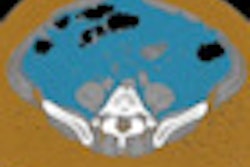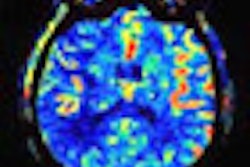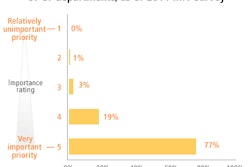The New England Journal of Medicine published a study this week indicating that the use of low-dose CT to screen individuals for lung cancer helps reduce mortality by 20%. First released in November 2010, the study results have helped draw renewed attention to CT lung screening.
CT lung screening has been controversial, with proponents arguing that it could be used to target specific at-risk patient populations such as smokers to catch lung disease earlier. Opponents acknowledge that while research has shown that CT screening can find tumors earlier, until recently there were no studies showing that CT lung screening affects mortality rates.
To help resolve the debate, the U.S. National Cancer Institute (NCI) initiated the National Lung Screening Trial (NLST), in which more than 53,000 patients were screened with both low-dose CT and chest radiography at 33 U.S. medical centers. The NCI found the results so compelling that it released the paper early last fall. This week's paper, by lead author Dr. Christine Berg, of the NCI's early detection research group at the Division of Cancer Prevention, and colleagues provides complete results and analysis (NEJM, August 4, 2011, Vol. 365:5, pp. 395-409).
Mortality reduction
A total of 53,454 participants were enrolled in the study, with 26,722 randomly assigned to screening with low-dose CT and 26,732 to screening with chest radiography. Low-dose CT scans were acquired with the use of MDCT scanners with a minimum of four channels, with an average effective dose of 1.5 mSv per subject.
The researchers found that there were 247 deaths from lung cancer per 100,000 person-years among participants in the low-dose CT group, compared with 309 deaths per 100,000 person-years in the chest radiography group, representing a mortality reduction of 20% through low-dose CT screening (p < 0.004). Screening occurred from August 2002 through September 2007, and the participants were followed through December 31, 2009.
Study participants were between the ages of 55 and 74 years at the time of enrollment, and they had a cigarette smoking history of at least 30 pack-years. Nonsmokers and people who had quit smoking within the previous 15 years were also included.
The study excluded individuals who had previously been diagnosed with lung cancer, had undergone a CT chest scan within 18 months before enrollment, had been diagnosed with hemoptysis (coughing up blood or bloody sputum from the lungs), or had an unexplained weight loss of more than 15 lb in the preceding year.
The participants were asked to undergo three screenings (T0, T1, and T2) at one-year intervals, with the first screening (T0) performed soon after randomization. Participants who were diagnosed with lung cancer were not offered subsequent screening tests.
Overall, the researchers achieved a high rate of adherence across all three rounds of screening, with a rate of 95% in the low-dose CT group and 93% in the radiography group.
Among all three rounds of tests, the study showed a substantially higher rate of positive results in the low-dose CT group than in the radiography group. The rate of positive tests in both groups was noticeably lower at T2 than at T0 or T1, Berg and colleagues noted. They attributed the decrease to the NLST's lesion classification protocol, which allowed abnormalities that had been considered suspicious but that were stable across all three rounds of screening to be classified as minor abnormalities, rather than as positive cancer findings.
During the screening phase of the study, the researchers found that 39.1% of participants in the low-dose CT group had at least one positive screening result, compared with 16% in the radiography group.
In addition, the percentage of all screening tests that identified a clinically significant abnormality for lung cancer was more than three times greater in the low-dose CT group (7.5%) than the radiography group (2.1%).
Low-dose CT
|
Chest radiography
|
More than 90% of the positive screening tests in the first round of screening (T0) resulted in further diagnostic evaluation, with lower follow-up rates at later screening stages. Across all three rounds, 96.4% of the positive results in the low-dose CT group and 94.5% in the radiography group were false positives.
Among the low-dose CT group, 24.2% of the scanning results were classified as positive, while 23.3% of the tests were considered false positive. Of the total number of radiographic screening tests in the three rounds, 6.9% were classified as positive and 6.5% were false-positive results.
In the low-dose CT group, 649 cancers were diagnosed after a positive screening test, 44 cancers were diagnosed after a negative screening test, and 367 cancers were found among participants who either missed the screening or received the diagnosis after their trial screening phase.
In the radiography group, 279 cancers were diagnosed after a positive screening test, 137 cancers were found after a negative screening test, and 525 cancers were discovered among participants who either missed the screening or received the diagnosis after their trial screening phase.
Within the low-dose CT group, there were 1,877 deaths, compared with 2,000 deaths in the radiography group, meaning that low-dose CT produced a statistically significant reduction of 6.7% in the rate of death from any cause (p = 0.02). When lung cancer deaths were excluded, the CT group had a 3.3% mortality reduction, which was not statistically significant (p = 0.28). The researchers concluded that 320 individuals needed to be screened with low-dose CT to prevent one lung cancer death.
The group acknowledged that the study raises many questions about CT lung screening, such as the optimal screening regimens, how long screening should continue, cost-effectiveness, and whether populations with demographic profiles different from that of the NSLT would benefit from screening.
"The benefits, harms, and costs of screening will all depend on the way in which low-dose CT screening is implemented, specifically in regard to the eligibility criteria, screening frequency, interpretation threshold, diagnostic follow-up, and treatment," the authors concluded.




















